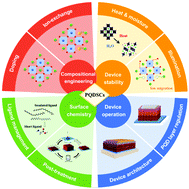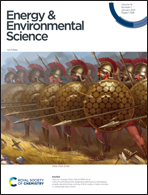Emerging perovskite quantum dot solar cells: feasible approaches to boost performance
Abstract
Lead halide perovskite quantum dots (PQDs), also called perovskite nanocrystals, are considered as one of the most promising classes of photovoltaic materials for solar cells due to their prominent optoelectronic properties and simple preparation techniques. Remarkable achievements in PQD solar cells (PQDSCs) have been made. In particular, the power conversion efficiency of PQDSCs has been largely pushed from 10.77% to 17.39% (certified 16.6%) by finely controlling the surface chemistry of PQDs and the device physics of PQDSCs. In this review, we summarize the latest advances of emerging PQDSCs and discuss various strategies applied to improve the device performance of PQDSCs, including the synthesis methods, compositional engineering and surface chemistry of PQDs. Moreover, the device operation of PQDSCs is discussed to highlight the effect of device architecture on the photovoltaic performance of PQDSCs. Facing the practical applications of the PQDSCs under ambient conditions, device stability is also highlighted. Finally, conclusions and perspectives are presented along with the possible challenges and opportunities to promote development steps of PQDSCs with higher photovoltaic performance and robust stability.



 Please wait while we load your content...
Please wait while we load your content...